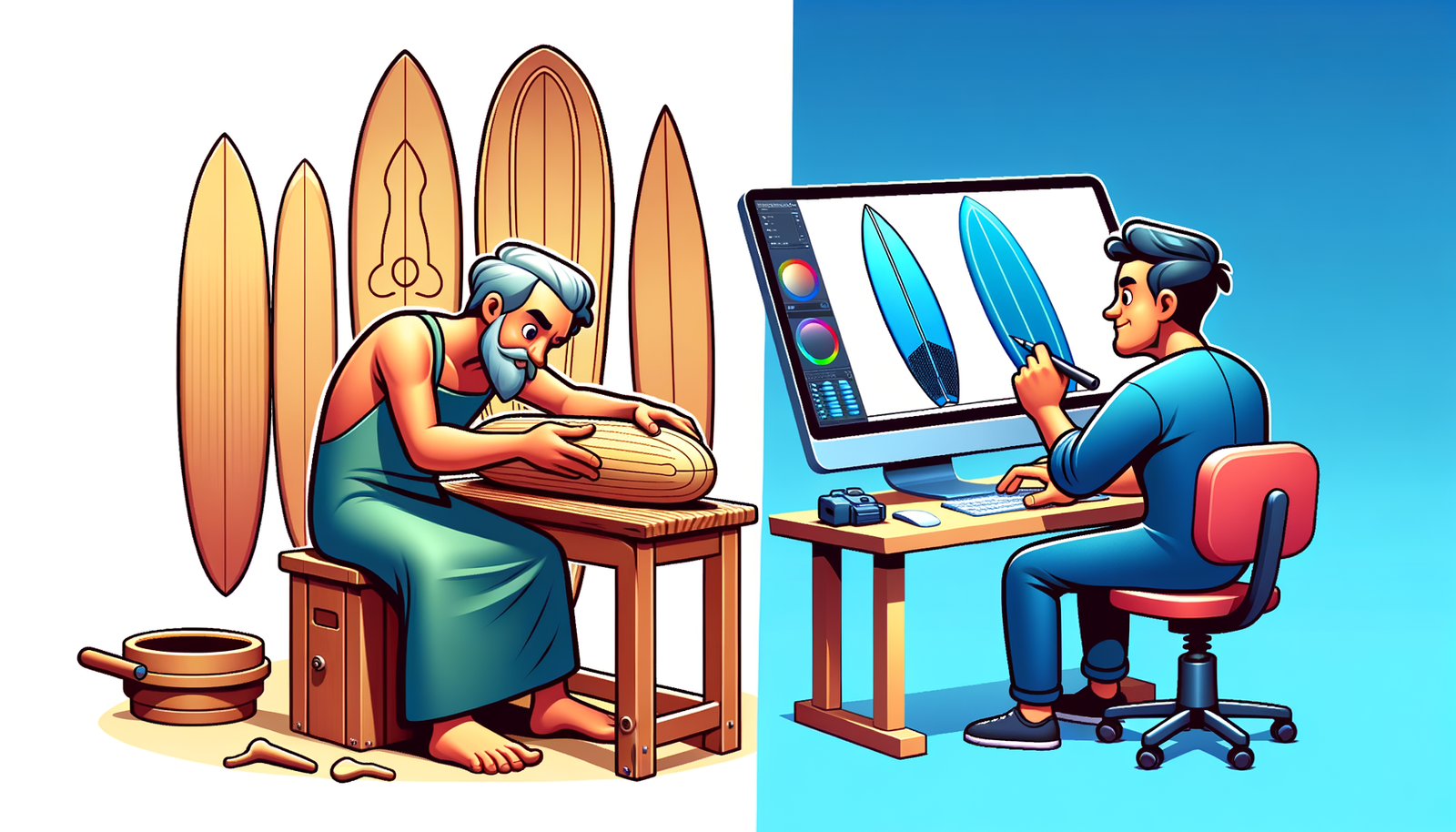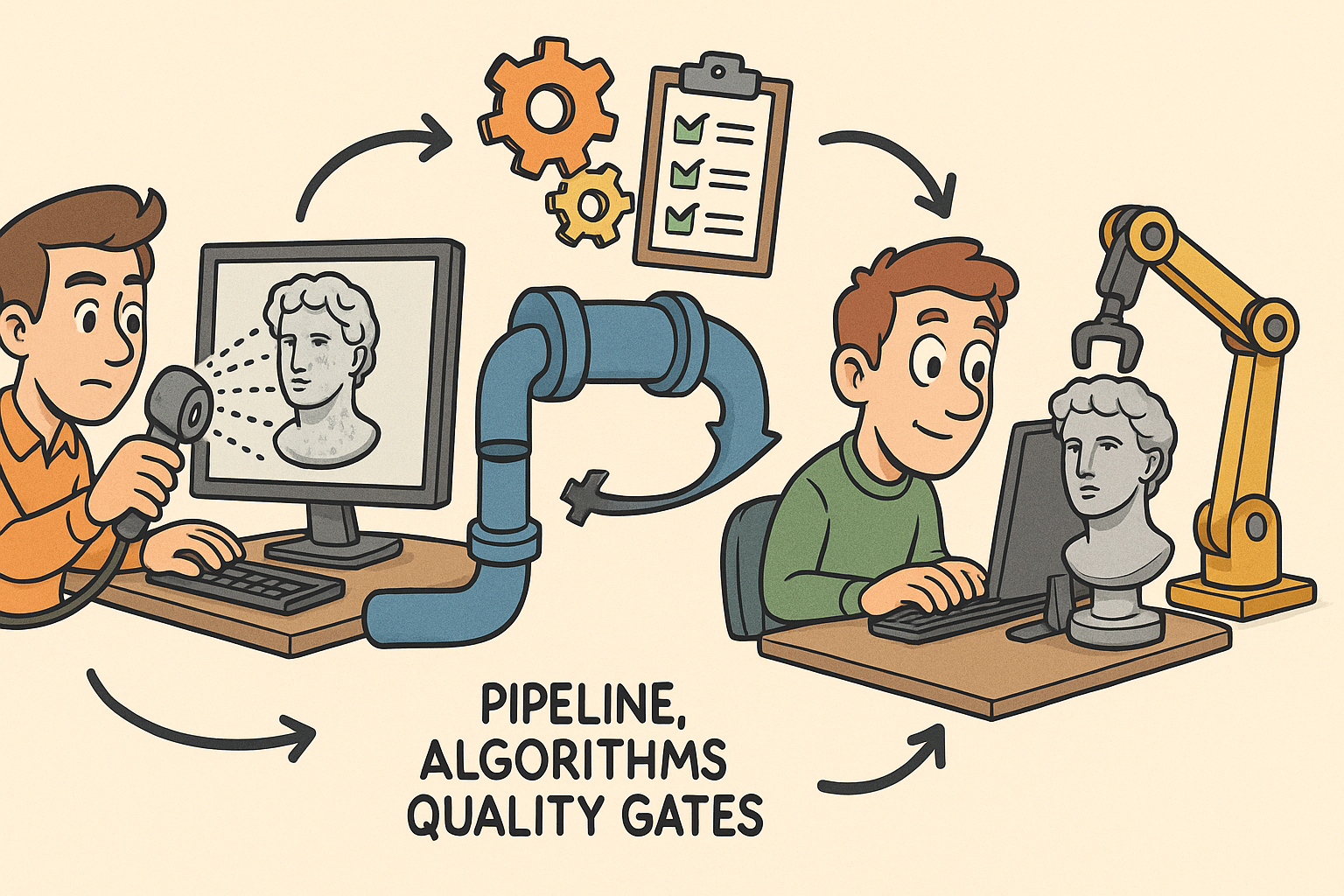Your Cart is Empty
Customer Testimonials
-
"Great customer service. The folks at Novedge were super helpful in navigating a somewhat complicated order including software upgrades and serial numbers in various stages of inactivity. They were friendly and helpful throughout the process.."
Ruben Ruckmark
"Quick & very helpful. We have been using Novedge for years and are very happy with their quick service when we need to make a purchase and excellent support resolving any issues."
Will Woodson
"Scott is the best. He reminds me about subscriptions dates, guides me in the correct direction for updates. He always responds promptly to me. He is literally the reason I continue to work with Novedge and will do so in the future."
Edward Mchugh
"Calvin Lok is “the man”. After my purchase of Sketchup 2021, he called me and provided step-by-step instructions to ease me through difficulties I was having with the setup of my new software."
Mike Borzage
Design Software History: The Evolution and Impact of Design Software in the Surf Industry
August 03, 2024 3 min read


Introduction
The surf industry has evolved significantly over the past century, driven by a combination of cultural influences and technological advancements. What began as a niche pastime in coastal regions has grown into a global phenomenon, with surfboards becoming more sophisticated and tailored to enhance performance and user experience.
In this article, we aim to trace the evolution of design software within the surf industry. We will highlight key technological advancements and their impact on the design and manufacturing of surfboards, shedding light on how software has transformed this vibrant sector.
Early Days: Handcrafting to Computer-Aided Design (CAD)
Traditional Surfboard Making
Initially, surfboards were crafted entirely by hand, using tools such as planers, rasps, and sanders. Skilled shapers relied on their expertise and intuition to sculpt each board from raw materials, typically wood and later polyurethane foam. This manual process, although artisanal and unique, had several limitations:
- Time-consuming and labor-intensive
- Inconsistent results due to human error
- Limited ability to replicate designs precisely
Introduction of CAD in Surfboard Design
The introduction of **Computer-Aided Design (CAD)** marked a pivotal moment in the surf industry. Early adopters of CAD tools recognized its potential to enhance precision and streamline the design process. Visionaries such as **Gerry Lopez** and **Mark Richards** were among the first to explore the possibilities that CAD offered.
The initial integration of CAD faced several challenges, including the high cost of software and hardware, as well as a steep learning curve for users accustomed to traditional methods. However, the benefits soon became apparent:
- Improved accuracy and consistency in board shapes
- Ability to experiment with new designs and geometries
- Enhanced ability to collaborate and share designs digitally
The Evolution of Surf-Specific Design Software
Development of Specialized Software
As the surf industry recognized the value of CAD, specialized surfboard design software began to emerge. Tools like **SurfCAD**, **AkuShaper**, and **Shape3D** were developed specifically to meet the unique needs of surfboard designers and manufacturers. These programs incorporated features tailored to the intricacies of surfboard shaping, such as rocker profiles, rail shapes, and fin placements.
Technological Innovations
Technological advancements in solid modeling and geometric modeling further enhanced the capabilities of surf-specific software. Innovations in user interfaces made these tools more accessible, allowing designers to create complex shapes with ease. Companies like **Autodesk** and **Dassault Systèmes** played a crucial role in driving these advancements.
In particular, the emergence of **3D printing** technology revolutionized the industry. Additive manufacturing enabled rapid prototyping and the production of custom components, reducing lead times and costs. Designers could now test and refine their creations with unprecedented speed and precision.
Influence on Surfboard Design
The integration of advanced design software had a profound impact on surfboard design. Builders could achieve higher levels of precision and customization, tailoring boards to the specific needs and preferences of individual riders. This led to the development of new materials and manufacturing techniques, further pushing the boundaries of performance and sustainability in surfboard construction.
Present and Future Trends
Current State of Design Software in Surfboard Manufacturing
Today, the surf industry leverages a range of sophisticated design software and technologies. Leading tools continue to evolve, incorporating features that enhance their utility and efficiency. The role of **additive manufacturing** and **3D printing** remains significant, enabling the creation of highly specialized and performance-oriented boards.
Impact of Emerging Technologies
Emerging technologies such as **artificial intelligence (AI)** and **machine learning** are beginning to influence the design process. AI can assist in optimizing board shapes for specific conditions and rider styles, while machine learning algorithms can analyze performance data to inform future designs. Additionally, **virtual reality (VR)** and **augmented reality (AR)** are transforming design visualization, allowing designers and customers to interact with digital models in immersive environments.
Future Prospects
The future of surfboard design software is poised to be exciting, with several trends on the horizon:
- Increased focus on sustainable and eco-friendly materials
- Improved integration of smart technologies for real-time performance feedback
- Potential applications of quantum computing to solve complex design challenges
These advancements promise to further enhance the precision, performance, and environmental impact of surfboard manufacturing.
Conclusion
Summary of Key Points
The journey from traditional handcrafting to advanced design software has been transformative for the surf industry. Technological innovations have revolutionized the way surfboards are designed and manufactured, leading to greater precision, customization, and efficiency.
Final Thoughts
Innovation continues to play a critical role in preserving the culture and spirit of surfing. As new technologies emerge, they offer exciting opportunities to further refine and enhance surfboard design. It is essential for designers and manufacturers to embrace these advancements, ensuring the ongoing evolution and sustainability of the surf industry.
Also in Design News

From Raw Scans to Manufacture-Ready Geometry: Pipeline, Algorithms, and Quality Gates
December 08, 2025 13 min read
Read More
Design Software History: Numerical Robustness in Geometry Kernels: History, Failure Modes, and Engineering Playbook
December 08, 2025 13 min read
Read More
Cinema 4D Tip: Reusable Cinema 4D Camera Rig Presets for Faster Shot Setup
December 08, 2025 2 min read
Read MoreSubscribe
Sign up to get the latest on sales, new releases and more …


